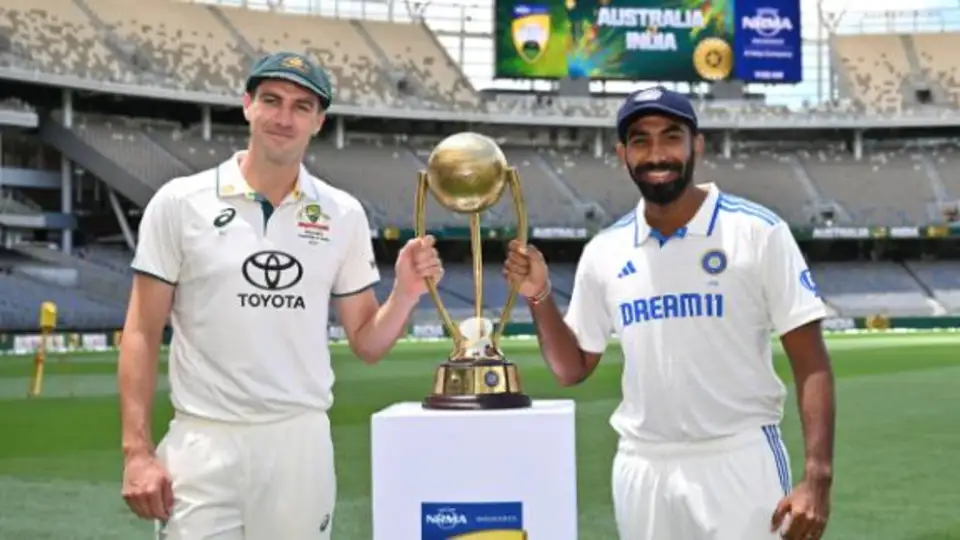Cricket is a game that has a tradition of more than 100 years. The very first game was played in the late 1880s. Ofcourse, there aren’t that many cricketing playing nations but it is expected because of the complexity of the game. In such a traditional sport, a few rituals have come into the picture. It is a ritual that the game can do without. The needless and stupid cricket rituals.
The first is the cap ceremony
Over the last several years, it has become a custom to handover the cap to a debutant on the morning of the game by a former player. Every team follows this custom without any exception. I do not mind this sort of a tradition behind closed doors. Let the players do what they like. However, what is the point in having this ceremony in front of the camera? Why is it required to be publicised? Handing over just a cap to someone who is making his debut is not even news. Why make it a sensation?
The blame must be squarely placed on the Australians. They are the ones who started this tradition long time ago. Infact, Steve Waugh and Ricky Ponting, in their respective autobiographies, have written that they absolutely revere the baggy green. Both of them still have the cap as part of their kit. Infact, Steve Waugh had ensured that he had the cap on his head during the last day of his career. The irony is that the baggy green is not revered by all the Australians. Ian Chappell doesn’t rate it and so does the late Shane Warne. For Warne, it is just a cap and nothing more nothing less. This is not to say that he didn’t like the baggy green. It is just that he doesn’t need a cap to show how much he loved to play for Australia.
Shane Warne’s own words
“I cherished my baggy green cap, it was with me every time we played,” Warney said.
“We wore it for the first session every time, and it sat next to me in the dressing room wherever I was all around the world.
“But… I always believed that you didn’t have to wear the baggy green cap to say how much you loved playing cricket for Australia.
“So the stuff that they go on about, the fabric of the baggy green and all this stuff that they go on about, I don’t sign in and buy in to that.
“I loved playing cricket for Australia, and I didn’t need to wear that cap or have that verbal diarrhoea about it, I just enjoyed playing cricket for Australia.
That is Warney. A legend who went onto represent Australia and became the greatest spinner of his era. Perhaps, forever. He didn’t think that only the baggy green showed how much he valued playing for Australia.
This has spread across the world
This unfortunate custom has now spread to every other country. Every team now has a cap giving ceremony. Why do they do that? Why do they have to copy the Australians? I will stick with India here. I do not remember anyone receiving a cap as a custom in my childhood. Every Indian player used to run onto the field with their caps on. Now, just before someone is about to make his debut, Test or ODI or T20, a former player is called upon to handover the cap to the debutant.
This is utter nonsense. The same player would have been wearing the cap in the dressing room before he makes his debut. A player would not have made his debut but would have been called upon as a substitute. He will go onto the field with a cap on. This essentially means that within the Indian team, the cap is not given any importance and rightly so. Why then a scene is created in front of the camera when the same player is about to make his debut? Even during the ceremony itself, you can clearly see that the said player will remove his old cap and wear the new one. There will not be any difference between either of them. Probably the number will be stitched in the new one but it hardly matters.
The team huddle
Another bizarre custom is the team huddle. This happens before the start of every session, every innings. It hardly lasts for 2-3 minutes. Again, this is done by every team. It makes one wonder what will be discussed during the 2-3 minutes that wasn’t discussed in the safety of the dressing room? Also, what will they discuss in every session? Whatever words of encouragement, why can’t it be uttered before stepping onto the field? I honestly do not know who started this tradition but it certainly is made for TV and is artificial. The camaraderie that wasn’t built in the dressing room, will not be built in those 3 minutes. If these are dictated by the broadcasters, it is time they are told not to interfere in cricketing matters.
Another couple of silly things that I saw in international cricket, though I will not call them as tradition or culture are the blatant breaks for ads and the blatant copying by BCCI of Australia.
Strategic time out or ad breaks?
Though I do not know about other leagues, IPL is notorious for these ad breaks. 5 minutes per innings in every game. It is given a fancy name called strategic timeout. There is nothing strategic about it. I am certain the players do not discuss the state of the game or formulate any new strategy. This flagrant chasing of money through constant advertisement is really sick. Why don’t the BCCI just call it “making money time” and be done with it instead of fooling everybody with a fancy name?
The cricket academy
Back in the day, when Australia dominated at every level, it was thought that it was because of their CoE (Centre of Excellence) at Adelaide. Almost every Aussie cricket of that era had been to CoE. BCCI swung into action immediately and they actually overdid it. They formed an academy in every zone and that was capped by the National Cricket Academy. Right upto this day, no one really knows what is the purpose of the NCA? Since its inception some 25 years ago, it has not done anything worthwhile. Most of the time, it remained defunct. It is only recently, after Dravid took over, that some improvement is prevalent at the NCA.
Conclusion to the needless and stupid cricket rituals
It is time the cap ceremony and the huddle is shown the door. Without this made for TV nonsense, cricket will still be entertaining.
Other blogs related to BCCI
A joke called BCCI volume 1, volume 2, volume 3, volume 4



